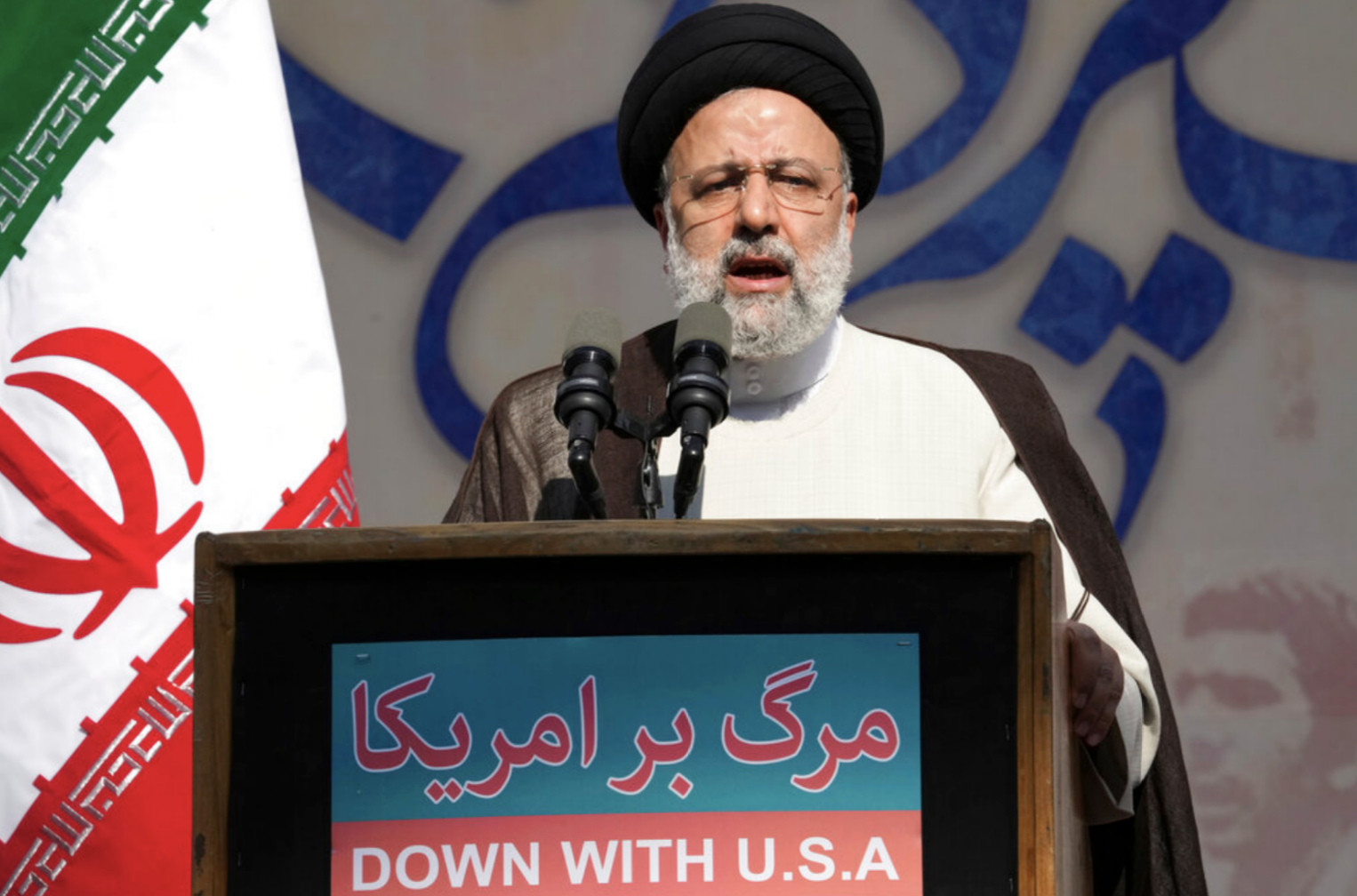“We Are Not Going To Stop”: US and Iran Go Hit-for-Hit in Proxy Drone Strikes in Syria
Iranian President Ebrahim Raisi addresses a crowd during an annual anti-American demonstration in front of the former U.S. Embassy in Tehran, Iran. Photo: AP Photo/Vahid Salemi
The last week has seen a rapid escalation in foreign intervention in Syria as a stand-off between Iran and the United States of America comes to a head. Since Thursday, March 23, both sides have gone “tit-for-tat” in initiating drone strikes against hostiles in war-torn Syria, resulting in the deaths of six Americans and at least a dozen Syrians and Iran-backed belligerents.
The tensions reignited on Thursday when the US received reports of a drone strike in the northeast Syrian city of Hasakah that resulted in the death of five US troops and an American contractor. US intelligence has said the drone was operated by Syrian militia groups, but of Iranian origin; it is the US government’s understanding that it was sent from pro-Tehran facets of Syrian fighters that are supported by the Iranian Revolutionary Guard directly.
Under the direction of President Biden himself, the US sent several airstrikes into the region, hitting two adversarial facilities in eastern Syria. Pentagon Press Secretary Brig. Gen. Pat Ryder Holds disclosed at a Pentagon press briefing on March 24 that the intended target was “groups affiliated with Iran's Islamic Revolutionary Guard Corps.” The goal of the Department of Defense is clear: as they have said, “no group will strike our troops with impunity.”
The actions of the US directly led to another attack on an American base at the Al-Omar oil field, wounding another US soldier. The back and forth has killed 19 Syrian and non-Syrian troops, and above all proven to be a sign of the level of instability of the peace in the region.
Iranian state TV has announced that no Iranian nationals had been killed in these strikes, and denied Iranian involvement in the actions of the Syrian factions. Still, sources maintain that “the resistance groups reserve their right to respond to the American attack and will take reciprocal action." Iran currently controls the largest drone fleet in the Middle East, according to US defense leaders, supporting the idea that Iran has the means to sharply react to foreign aggression.
Joint Chiefs of Staff Spokesman U.S. Air Force Brig. Gen. Patrick Ryder speaks during a media briefing on the Syria and Iran outbreaks at the Pentagon, Friday, March 24, in Washington. Photo: AP Photo/Alex Brandon
According to the Department of Defense, there have not been any more clashes since Friday. Still, President Biden has repeatedly expressed his intention to use force as a means of maintaining authority in the region.
“The United States does not…seek conflict with Iran,” he emphasized during a joint press conference with Canadian Prime Minister Justin Trudeau on March 24. “But be prepared for us to act forcefully to protect our people.” Notably, Canada has also taken action against Iran, citing human rights violations and egregious drone and missile production and foreign distribution.
The escalated tensions between Iran and the US come at a time of great internal instability for the former, yet they do not seem to be slowing down. As indicated by both press statements and actions of both sides, any sense of aggression from the other side is sure to keep the bullets flying and the Syrian people falling victim.


